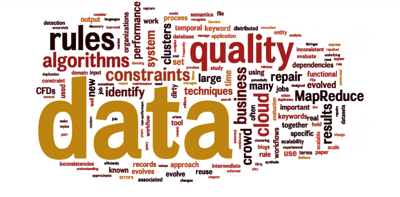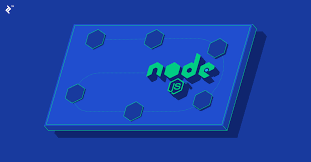What are the topmost NodeJS practices for developers?.
Node.js, a platform based on Chrome's JavaScript motor assists with growing quick, adaptable system applications. It utilizes an occasion driven,...
4 min read
Preetisha Dayal : Apr 9, 2018 12:00:00 AM

Big Data Modeling as a business has been drilled in the IT world for a long time. As an idea, the data model is a procedure for reaching the diagram by investigating the data being referred to and getting a profound comprehension of the database. The procedure to interpret the data pictorially assists the professionals and the business with comprehending the data and see how will it be utilized. Likewise, the connections in data indexes, which is pre-characterized, decide progressively how the data should be represented.
Big Data Models have numerous prospects. These lead to diversity in both content and style, which can cause disarray, amazement, and contradiction. This article features some unique types of data models that are most often used in data modeling.
A conceptual data model is a representation of the objects in the business and the connections among them, as opposed to a model of the data about those objects. Therefore, conceptual data models have some characteristics. What might regularly be characterized may well be handled as relationship types or entity types in their own right, and where data is considered as an object in its own particular right, instead of considered as being fundamentally something unique.A conceptual data model may at present be adequately credited as completely instantiable. However, more often in a non-specific way.
Key features include:
Read more: How to use Big Data for price optimization
A physical data model showcases the genuine structure of a data—the messages sent between computer procedures or tables and columns. Here, the types of entity normally denote tables, and the foreign keys between tables are depicted by the relationship type lines. The data model's formation will frequently be tuned to the specific needs of the procedures that work on the information to guarantee sufficient execution.
Key features normally include:

Logical data models enable to characterize the detailed framework of the data components in a system and the relationship between them. They filter the data components presented by a Conceptual data model and frame the foundation of the Physical data model.
Logical data modeling is the way towards representing the data organization and architecture graphically with no reference to the physical usage or the database management framework technology engaged with saving data. It does not give any data identified with how the structure is to be actualized or the technologies that are expected to execute the information structure determined.
Three popular data models of logical data are:
Key features include:
Want to get an in-depth insight on Big Data. Then grab your copy right here.
An enterprise data model is a sort of data modeling that introduces a perspective of all the data employed by the corporation. It gives an incorporated yet broad diagram of the venture's data, paying little heed to the data administration technology utilized. It likewise helps in creating other database parts, for example, entity relationship diagrams, XML schemas, and data dictionaries.
Key features include:
It is known as a star schema due to its diagram that looks like a star, with points transmitting from a core. Star Schema is created for questioning huge informational indexes and are utilized as a part of data stockrooms and data marts to help business insight, OLAP cubes, analytic applications, and impromptu inquiries. The star schema reinforces quick aggregations, (for example, count, total, and average) of numerous fact records, and these aggregates can be effectively filtered and assembled, i.e. "sliced and diced" by the dimensions.
Regardless of the fact that it is the least complex architecture, a star schema is most generally used these days.
Key features include:
Also read: Keys to get the best out of Big data
This model characterizes a database as a combination of objects, or reusable software components, with related features and techniques. The object-oriented database model is the best recognized post-relational database model since it consolidates tables, however, isn't constrained to the tables. Such models are otherwise called hybrid database models.
There are a lot of kinds of object-oriented databases:
A multimedia database includes media, for example, pictures, that couldn't be located in a relational database.
A hypertext database enables any object to connect to some other object. It's valuable for sorting out several divergent information, yet it's not perfect for numerical research.
Key features include:
Have a project on Big Data? Reach out to us for a consultation.

Node.js, a platform based on Chrome's JavaScript motor assists with growing quick, adaptable system applications. It utilizes an occasion driven,...
What could be the ultimate goal for each business person? Increase the number of sales!!! In any case, driving traffic and offering amazing...